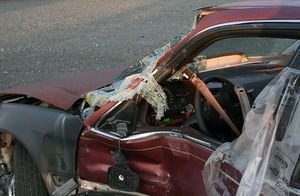Insurance companies may be classified into two groups:
- Life insurance companies, which sell life insurance, annuities and pensions products.
- Non-life, General, or Property/Casualty insurance companies, which sell other types of insurance.
General insurance companies can be further divided into these sub categories.
- Standard Lines
- Excess Lines
In most countries, life and non-life insurers are subject to different regulatory regimes and different tax and accounting rules. The main reason for the distinction between the two types of company is that life, annuity, and pension business is very long-term in nature — coverage for life assurance or a pension can cover risks over many decades. By contrast, non-life insurance cover usually covers a shorter period, such as one year.
In the United States, standard line insurance companies are "main stream" insurers. These are the companies that typically insure autos, homes or businesses. They use pattern or "cookie-cutter" policies without variation from one person to the next. They usually have lower premiums than excess lines and can sell directly to individuals. They are regulated by state laws that can restrict the amount they can charge for insurance policies.
Excess line insurance companies (aka Excess and Surplus) typically insure risks not covered by the standard lines market. They are broadly referred as being all insurance placed with non-admitted insurers. Non-admitted insurers are not licensed in the states where the risks are located. These companies have more flexibility and can react faster than standard insurance companies because they are not required to file rates and forms as the "admitted" carriers do. However, they still have substantial regulatory requirements placed upon them. State laws generally require insurance placed with surplus line agents and brokers not to be available through standard licensed insurers.
Insurance companies are generally classified as either mutual or stock companies. Mutual companies are owned by the policyholders, while stockholders (who may or may not own policies) own stock insurance companies. Demutualization of mutual insurers to form stock companies, as well as the formation of a hybrid known as a mutual holding company, became common in some countries, such as the United States, in the late 20th century. Other possible forms for an insurance company include reciprocals, in which policyholders 'reciprocate' in sharing risks, and Lloyds organizations.
Insurance companies are rated by various agencies such as A. M. Best. The ratings include the company's financial strength, which measures its ability to pay claims. It also rates financial instruments issued by the insurance company, such as bonds, notes, and securitization products.
Reinsurance companies are insurance companies that sell policies to other insurance companies, allowing them to reduce their risks and protect themselves from very large losses. The reinsurance market is dominated by a few very large companies, with huge reserves. A reinsurer may also be a direct writer of insurance risks as well.
source:wikipedia..















